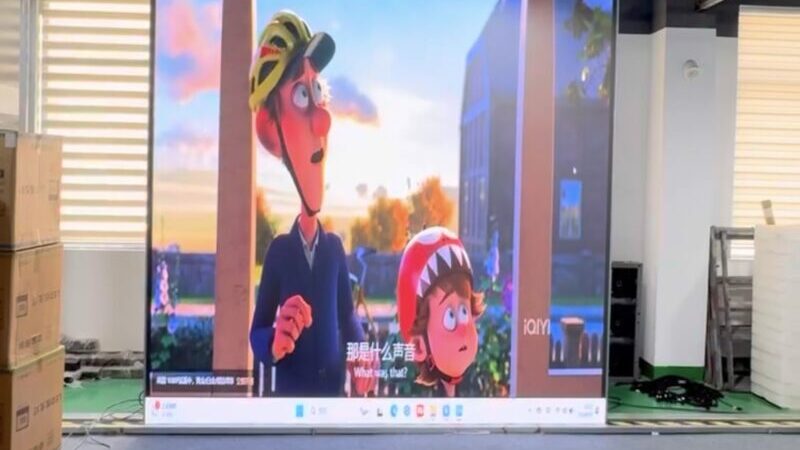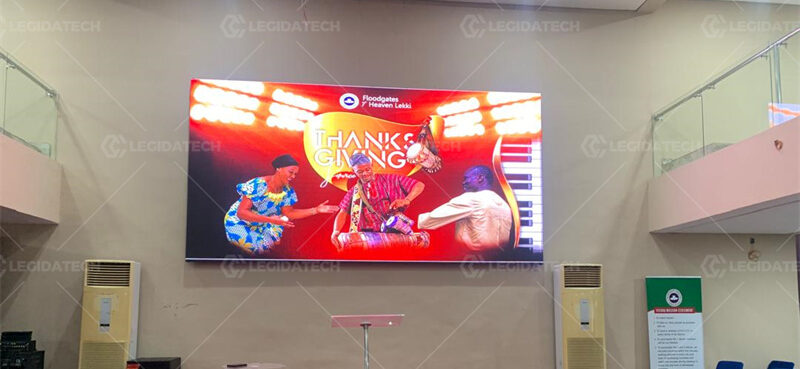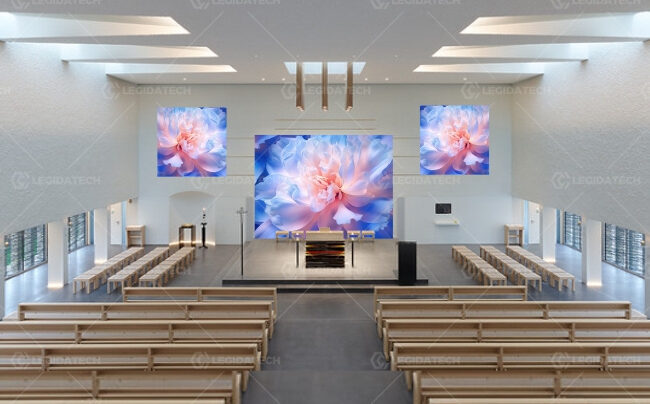In today’s society, LED displays have spread to every corner.
They can be seen everywhere in bustling commercial centers, serve as information guides in transportation hubs, are used for live broadcasts of large-scale sports events, and also facilitate efficient presentations in corporate meeting rooms.
![]()
With their colorful and flexible features, LED displays have become a crucial medium for information dissemination and visual presentation.
Among numerous influencing factors, pixel pitch, as a key element, has a significant impact on the display effect and unlocks the visual potential for different application scenarios.
1. Definition of Pixel Pitch
Pixel pitch refers to the distance between the centers of adjacent pixels and is usually measured in millimeters.
It is an important indicator for evaluating the resolution and clarity of LED displays.
Just as the spacing between bricks in a building determines the smoothness and fineness of the wall, pixel pitch directly affects the quality of images and texts presented on the display.
2. Advantages and Application Scenarios of Small Pixel Pitch
2.1 High Resolution and Clarity Performance
A small pixel pitch means that there are a large number of pixels within a unit area, which will significantly increase the pixel density.
This enables the display to present images with extremely high precision. Whether it is fine textures, subtle color transitions, tiny texts or complex charts, all can be clearly distinguished.
![]()
For example, when displaying a magnificent piece of art, an LED display screen with a small pixel pitch can faithfully reproduce every brushstroke of the painter and perfectly showcase the charm of the artwork.
When playing high-definition videos, the fine details such as the strands of hair, the texture of the skin and the minute elements in the background can be vividly presented, bringing an immersive visual experience to the audience.
2.2 Examples of Applicable Venues
2.2.1 Control Centers
In various control centers such as traffic control and power dispatching, LED displays with a small pixel pitch can clearly present numerous information windows within a limited space, ensuring that no detail is overlooked.
For example, in urban traffic control, the display can show the real-time traffic conditions of multiple intersections with high definition, allowing traffic managers to make timely and accurate decisions.
2.2.2. High-End Retail Stores
In high-end retail environments, digital signage with a small pixel pitch can be used to display product details.
It can present the exquisite craftsmanship and unique features of luxury goods, attract customers’ attention and enhance their desire to purchase.
![]()
For instance, a jewelry store can use such a display to show the delicate design and sparkling luster of precious gems and ornaments.
2.2.3. Corporate Meeting Rooms
In corporate meeting rooms,LED Displays with a small pixel pitch can clearly project detailed reports, charts and multimedia materials, facilitating effective communication and decision-making among team members.
![]()
3. Characteristics and Application Ranges of Large Pixel Pitch
3.1 Long-Distance Viewing Effect
Large pixel pitch displays have unique advantages in long-distance viewing. Although individual pixels may be more noticeable when viewed up close, they will blend together when viewed from a distance, creating a striking and impactful visual effect.
The increased spacing between pixels allows for greater light output and higher brightness, ensuring that the display remains visible and attractive even from a long distance.
3.2 Typical Application Cases
3.2.1 Outdoor Billboards:
Along highways and in urban areas, outdoor billboards need to capture the attention of passersby instantly.
LED displays with a large pixel pitch, with their high brightness and eye-catching visual effects, are very suitable for this purpose.
For example, a billboard promoting a new movie can use a large pixel pitch display to show the captivating movie poster and key scenes, attracting the attention of drivers and pedestrians.
3.2.2 Large Stadium Displays
In large stadiums, the LED screens need to be visible to thousands of spectators seated at various distances.
The large pixel pitch ensures that every seat in the stadium can clearly see the game situation.
Whether it is a goal in a football match, a touchdown in an American football game or the performance of athletes in other sports, the
Stadium LED screen can vividly present these exciting moments, enhancing the atmosphere and the viewing experience of the audience.
4. Impact of Pixel Pitch on Cost and Energy Consumption
4.1 Cost Correlation
LED displays with a small pixel pitch usually have higher costs due to their high pixel density and complex manufacturing processes.
The production of such displays requires more advanced technologies and precise calibration, which greatly increases the manufacturing cost.
However, for application scenarios where visual quality is of utmost importance, such as high-end broadcasting studios or professional graphic design workstations, such an investment is quite reasonable.
4.2 Energy Consumption Difference
LED displays with a small pixel pitch consume more energy because more pixels need to be lit.
In contrast, displays with a large pixel pitch are more energy-efficient.
However, in many cases, people will carefully weigh the relationship between energy consumption and image quality, and often sacrifice the former for the latter.
5. Conclusion and Outlook
In conclusion, pixel pitch plays a crucial role in different LED display applications.
With the continuous progress of technology, we can expect further innovations in pixel pitch technology.
Future developments may reduce the cost of LED displays with a small pixel pitch and improve the energy efficiency of both small and large pixel pitch displays.
This will open up more possibilities for the application of LED displays, promote greater innovation, and enable them to meet the increasingly diverse and demanding visual needs of various industries and users.
Author : Amber





